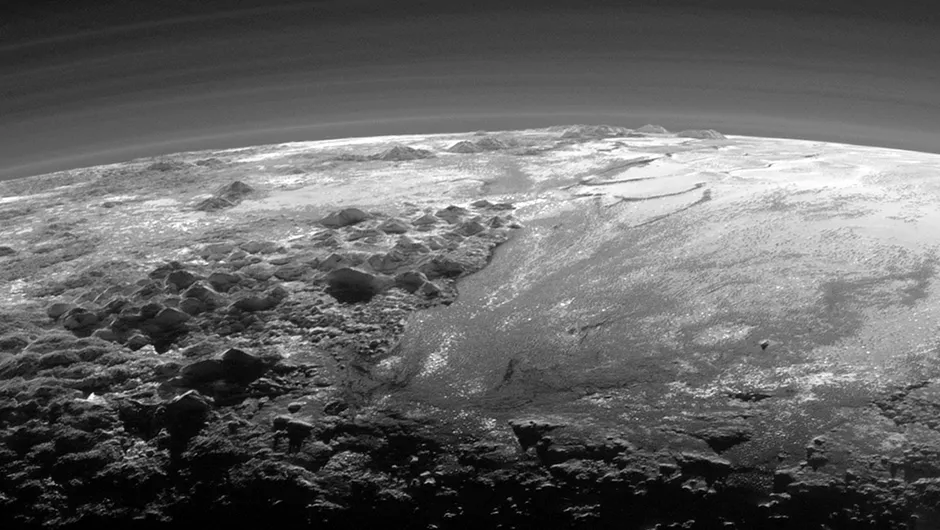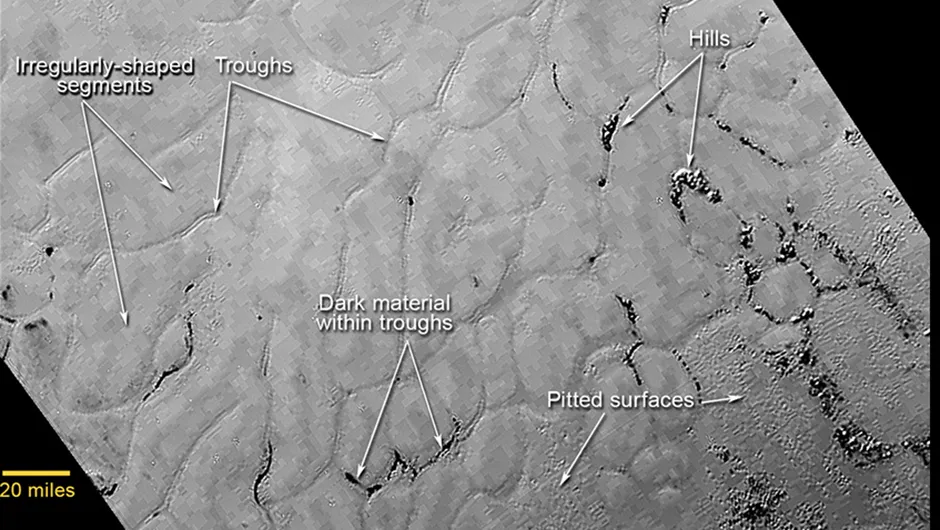Dune-like features can be seen in Sputnik Planitia, which scientists believe were caused by thermal winds transporting grains of methane ice. Image Credit: NASA/JHUAPL/SwRI
Dunes of methane ice have been discovered on Pluto using data from the New Horizons mission.
The dunes are likely to have been formed from methane ice grains being deposited by Pluto’s winds.
The discovery is part of a study led by scientists from the University of Plymouth, University of Cologne and Brigham Young University.
A team used images and data from the New Horizons mission, which launched in 2006 and began studying Pluto and its moons in 2015.
The spacecraft is currently heading outwards into the Kuiper Belt.

Images from New Horizons reveal a series of dunes covering an area about 75km across, on the boundary of Sputnik Planitia.
This icy plain makes up the western part of Pluto’s heart-shaped feature, which New Horizons managed to image close-up during its closest approach on 14 July 2015.
Analysing these images and studying nearby wind streaks on Pluto’s surface, the team deduced that sublimation - a process by which solid turns directly into a gas - is causing sand-sized grains of methane to be released into the environment.
These grains are transported by Pluto’s thermal winds - which can reach 30-40 km per hour - and deposited near the ice plain.
“On Earth, you need a certain strength of wind to release sand particles into the air, but winds that are 20 per cent weaker are then sufficient to maintain transport.” says Dr Eric Parteli of the University of Cologne, who was involved in the study.
“The considerably lower gravity of Pluto, and the extremely low atmospheric pressure, means the winds needed to maintain sediment transport can be 50 times lower.”
The study suggests the dune features could have been formed in the last 500,000 years, possibly more recently.
The researchers will now carry out computer simulations to attempt to piece together the history of the dunes’ formation and learn more about Pluto.

“We knew that every Solar System body with an atmosphere and a solid rocky surface has dunes on it, but we didn’t know what we’d find on Pluto,” says Dr Matt Telfer, of the University of Plymouth and lead author of the study.
“It turns out that even though there is so little atmosphere, and the surface temperature is around -230˚C, we still get dunes forming.”